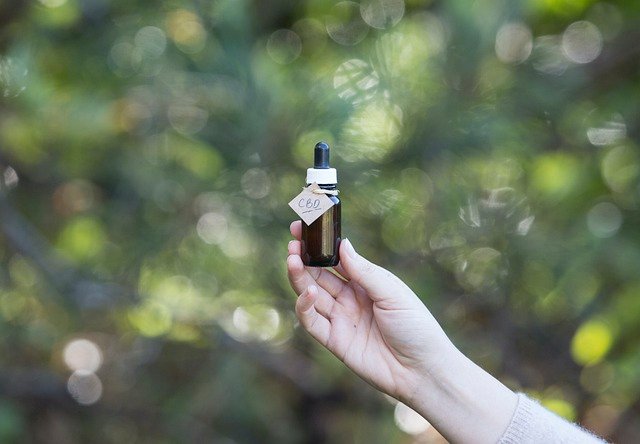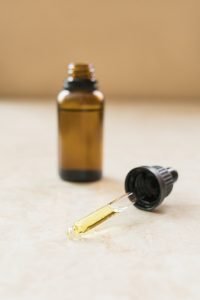
Cannabidiol, commonly known as CBD, has gained significant popularity in recent years due to its potential health benefits and non-psychoactive properties. Derived from the cannabis plant, CBD is one of over 100 cannabinoids, but unlike THC, it doesn’t induce a high. This makes it an attractive option for those seeking relief from pain, anxiety, and other ailments without the mind-altering effects of cannabis or certain pharmaceutical drugs.
As a beginner, the world of CBD oil can be overwhelming, given the variety of products and information available. This guide aims to simplify your journey, helping you make informed decisions when purchasing your first CBD oil.
Understanding CBD Oil
Before diving into the purchase process, it’s essential to understand what CBD oil is and how it works. CBD oil is created by extracting CBD from the cannabis plant and then diluting it with a carrier oil like coconut or hemp seed oil. CBD interacts with the body’s endocannabinoid system, which plays a role in regulating various physiological processes, including mood, appetite, and pain sensation.
Types of CBD Oil
CBD oil products are generally categorized into three types based on their cannabinoid content:
Full-Spectrum CBD
Full-spectrum CBD contains all the cannabinoids found in the cannabis plant, including trace amounts of THC. This type of CBD oil is believed to produce the “entourage effect,” where the cannabinoids work synergistically for enhanced therapeutic benefits.
Broad-Spectrum CBD
Broad-spectrum CBD also contains multiple cannabinoids but is free of THC. It provides the benefits of the entourage effect without the psychoactive risk of THC.
CBD Isolate
CBD isolate is the purest form of CBD, containing no other cannabinoids or THC. It is ideal for those who prefer to avoid THC completely.
Factors to Consider When Choosing CBD Oil
When selecting CBD oil, especially as a beginner, several factors should be taken into account to ensure you get a product that suits your needs and is safe to use.
Source of Hemp
The quality of CBD oil is directly linked to the quality of the hemp it is derived from. It is crucial to choose products made from organically grown hemp that is free from pesticides and harmful chemicals. Look for products that source their hemp from reputable farms in regions known for stringent agricultural standards, such as the United States or Europe.
Extraction Method
The method used to extract CBD from the hemp plant impacts the purity and quality of the final product. CO2 extraction is considered the gold standard as it ensures high purity and potency without leaving behind harmful solvents. Avoid products that use cheaper extraction methods like butane or propane extraction, as they can leave residues.
Third-Party Testing
Reputable CBD brands provide third-party lab testing results for their products. These tests verify the product’s cannabinoid profile and check for contaminants like heavy metals, pesticides, and solvents. Always opt for CBD oils that come with a Certificate of Analysis (COA) from an independent lab.
Potency
CBD oil comes in various strengths, typically measured in milligrams (mg) of CBD per bottle. Beginners should start with a lower-potency oil to gauge their body’s response before gradually increasing the dosage. A product with 250mg to 500mg of CBD per 30ml bottle is a good starting point.
Carrier Oil
CBD is usually mixed with a carrier oil to enhance absorption. Common carrier oils include MCT oil, hemp seed oil, and olive oil. Choose a product with a carrier oil that suits your dietary preferences and any allergies you might have.
Flavor
CBD oil can have a natural earthy taste, which some people find unpleasant. Many brands offer flavored options to make the oil more palatable. If taste is a concern, look for CBD oils with natural flavors like mint, lemon, or orange.
How to Use CBD Oil
Understanding how to use CBD oil correctly is crucial for its effectiveness. Here are some common methods of consumption:
Sublingual Method
The most popular way to take CBD oil is sublingually, or under the tongue. Place the desired amount of oil under your tongue and hold it there for 60-90 seconds before swallowing. This method allows for quick absorption into the bloodstream.
Mixing with Food or Drinks
If you dislike the taste of CBD oil, you can mix it into your food or beverages. This method may take longer to produce effects since the CBD must pass through the digestive system.
Topical Application
Some CBD oils can be applied directly to the skin for localized relief of pain or inflammation. Check the product’s label to ensure it’s suitable for topical use.
Determining the Right Dosage
Finding the right CBD dosage can be a trial-and-error process. Factors such as body weight, individual body chemistry, and the condition being treated all play a role in determining the optimal dose. As a general rule, start with a low dose and gradually increase it until you achieve the desired effects. It’s always a good idea to consult with a healthcare professional, especially if you are taking other medications.
Potential Benefits of CBD Oil
Although research is still ongoing, CBD oil has been associated with several potential health benefits:
Pain Relief
CBD is believed to interact with the body’s endocannabinoid system to reduce inflammation and alleviate pain. It has been used to manage chronic pain conditions like arthritis and multiple sclerosis.
Anxiety and Depression
Studies suggest that CBD may help reduce anxiety and depression by influencing the brain’s receptors for serotonin, a neurotransmitter that regulates mood.
Improved Sleep
CBD has been reported to improve sleep quality by addressing issues such as anxiety and pain that can interfere with restful sleep.
Neuroprotective Properties
CBD’s potential neuroprotective properties have been studied for conditions like epilepsy and multiple sclerosis. The FDA has even approved a CBD-based drug, Epidiolex, for treating certain types of epilepsy.
Potential Side Effects
While CBD is generally considered safe, some people may experience side effects, including:
– Dry mouth
– Drowsiness
– Changes in appetite
– Diarrhea
It’s important to monitor how your body reacts to CBD oil and adjust the dosage accordingly. If you experience adverse effects, discontinue use and consult a healthcare professional.
Conclusion
Embarking on your CBD journey can be both exciting and intimidating. By understanding the basics of CBD, considering the essential factors when choosing a product, and starting with a low dosage, you can make an informed decision that aligns with your health goals. As the market for CBD continues to grow, it’s crucial to stay informed and choose products from reputable brands that prioritize quality and transparency.
Remember, while CBD oil offers potential benefits, it’s not a one-size-fits-all solution. Each individual’s response to CBD is unique, so patience and careful experimentation are key to discovering the best CBD oil for your needs.
#ChatGPT assisted in the creation of this article.







